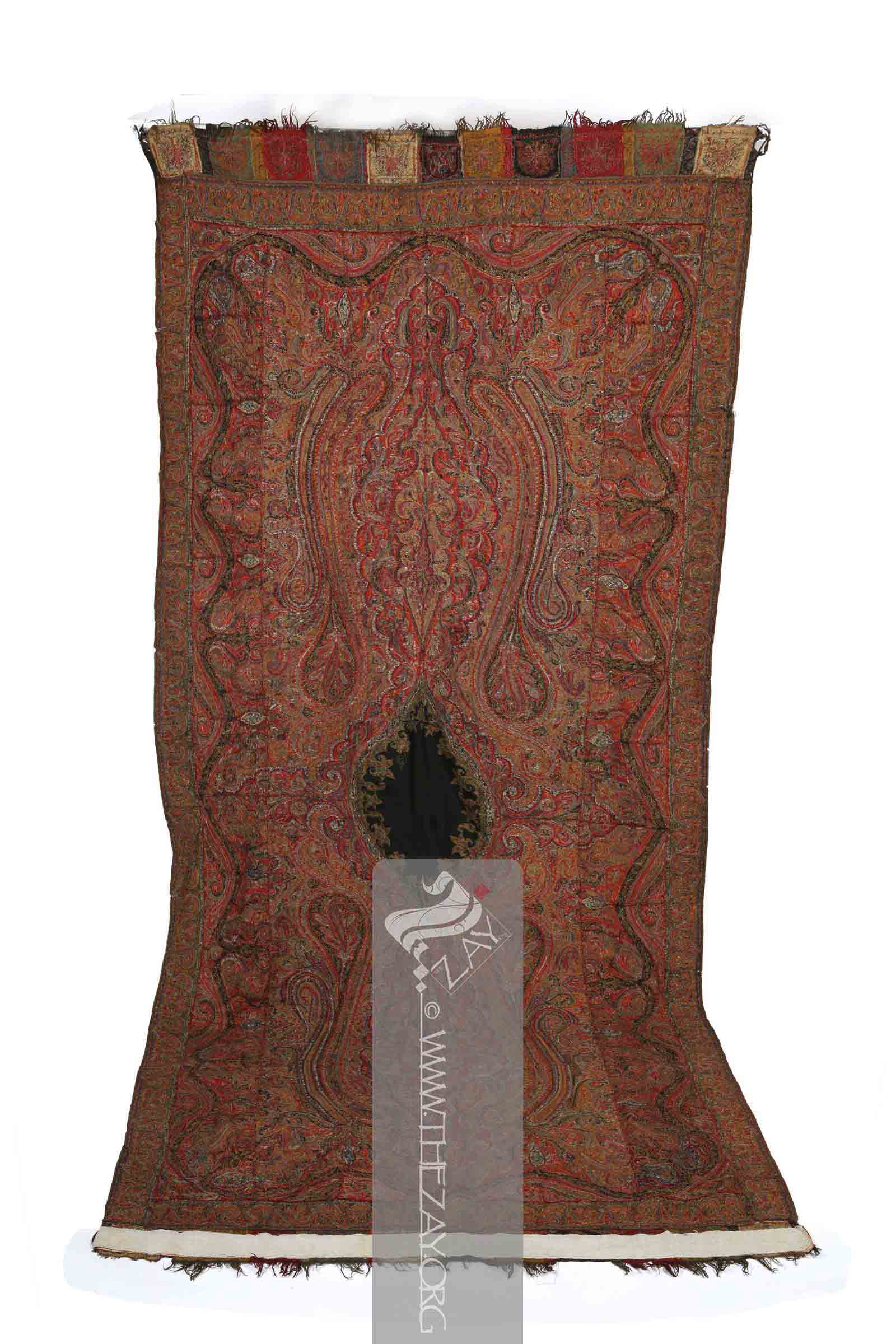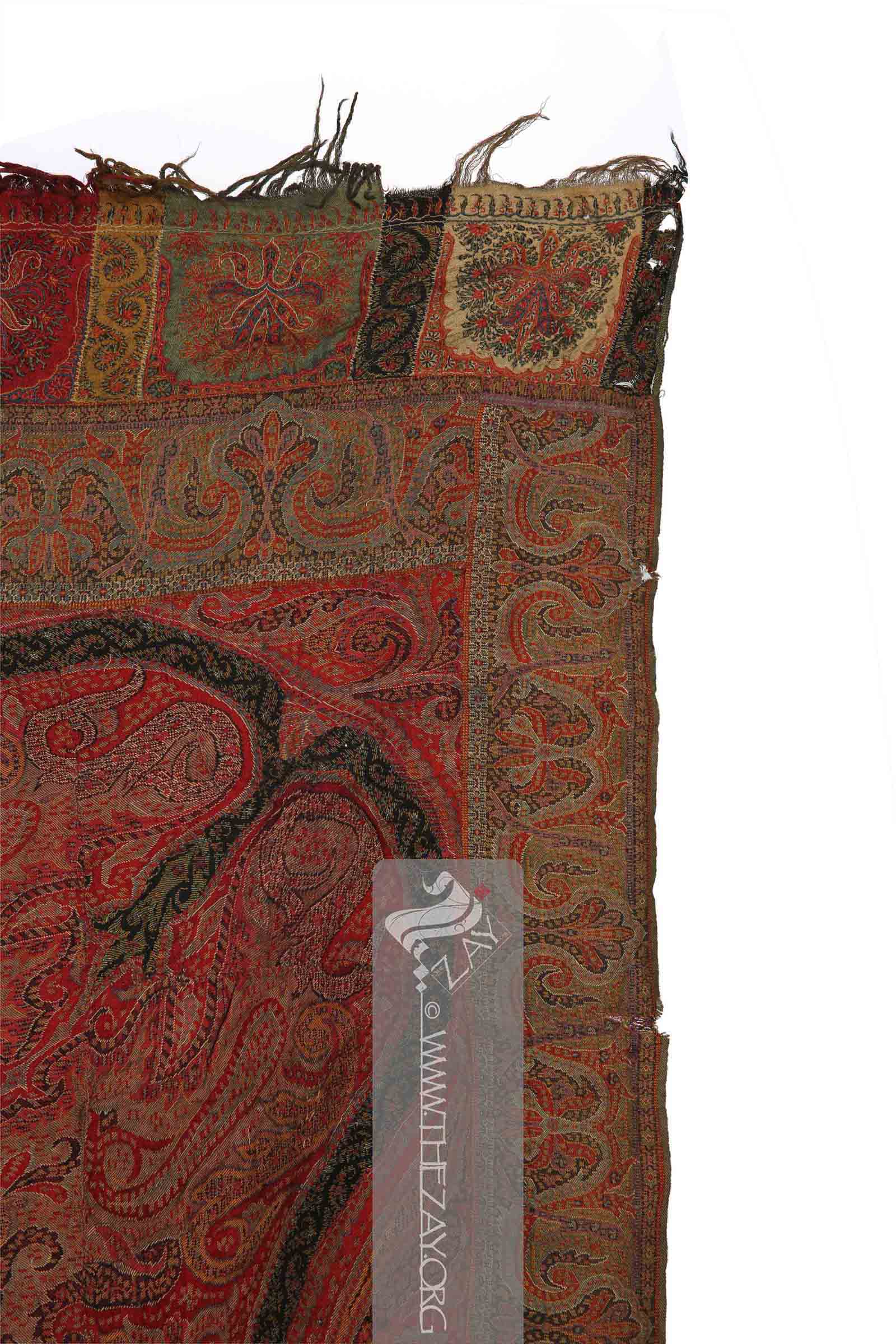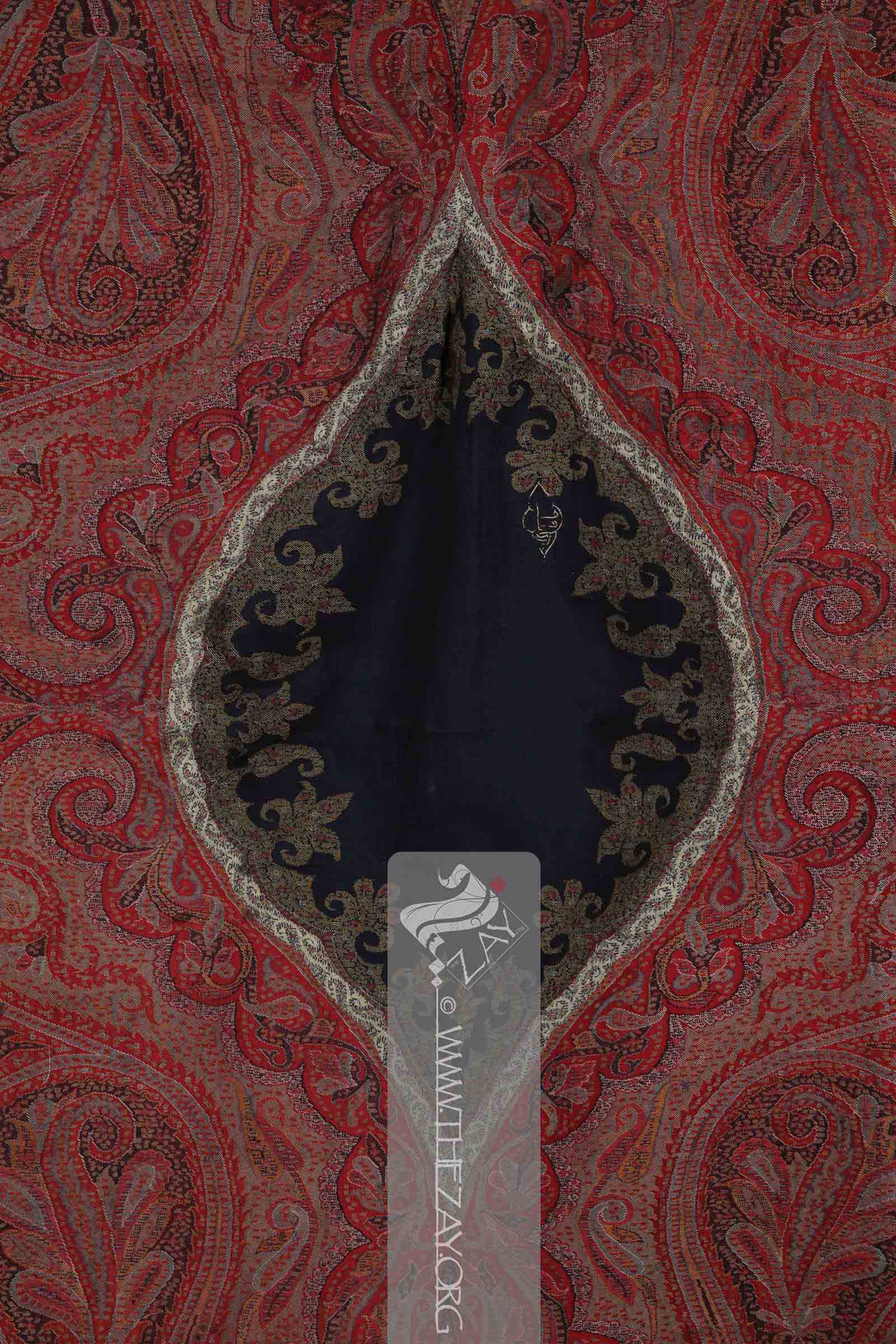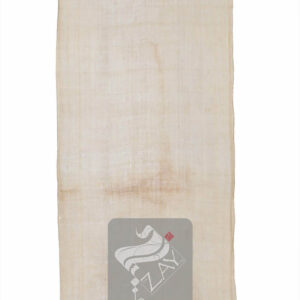Object History
This Kashmiri (twill_tapestry) (Kani) scarf (shawl) dating back to the mid-19th century was originally a part of the Dr Joan Coleman Collection. It was first purchased on July 28, 1977, at an auction at Christie’s, London, and later The Zay Initiative acquired it from Kerry Taylor Auctions in 2015.
Dr Joan Coleman began collecting shawls in 1976 and developed her lifelong passion for collecting. She was a regular at the London salesroom of Christie’s, Sotheby’s, and Phillips – three of the most outstanding auction houses of the period in the world – getting to know the dealers and learning in the process.
She acquired vast knowledge and dedicated hours carefully cataloguing her ever-growing collection. She intended to loan her collection to different museums and institutions for the benefit of learning and education.
Her collection is one of the largest and the finest private shawl collections to have ever graced the world, with shawls from Kashmir, Paisley, Edinburgh, Norwich, France, and Iran.
Object Features
This rectangular shawl is composed of several patches of polychrome woollen fabric on a red (madder) base. Hand woven on a loom, it is then hand-stitched and embellished with hand embroidery sprinkled with (paisley) and floral motifs.
It has a large black oblong medallion in a trellis pattern in the middle with an ivory border with floral patterns sprouting inside. The signature of the manufacturer is embroidered in silk thread (resham) in a corner of the central black panel.
The medallion is surrounded by four large paisley motifs mirroring one another with smaller oblong trellis patterns in ivory running along the inner border of the design.
The two borders on the longitudinal sides of the fabric are decorated with floral patterned arches, with a central bouquet, that gives way to fringes at the end. With multiple colours and motifs, this piece is a typical example of a Kani weave.
Usually, a Kashmiri shawl is woven in a twill-tapestry technique. With the intricate designs and large areas of patterns, it could sometimes take as long as 18 months or more to weave one shawl.
In the early 19th century, with the introduction of more elaborate designs, a new practice of dividing the work of a single shawl across multiple looms was introduced, making production time shorter.
Each loom would weave a part of the same shawl, then it would be handed over to the needleworker or darner (refugar), who would hand-stitch them together creating a single piece. This joining stitch would be executed with such subtlety and fineness that it was almost impossible to detect with the naked eye.
The use of turquoise (pheroza), black, and ivory with shades of red on a madder base, all obtained from vegetables or other naturally found minerals, gives this piece of fabric a flavour typical of the Kashmir region. The ivory oval motifs on the outer edges balance and reflects the black oval trellis medallion with an ivory border in the center.
The larger part of the fabric is decorated with four large leaves sprouting from the inner corners and paisleys of different variations forming the inner layer (tanjir) of the border. The outermost layer (phala) of the border resembles the floral-patterned decorative arches of (Indo_Persian architecture) each with a central bouquet resembling a cyprus tree. The fringes hanging on the shorter ends of the fabric are the warp threads in their original colour and act as decorative trimmings.
The signature of the manufacturer along with touches of embroidery throughout the fabric are embroidered in resham.
Links:
- Kerry Taylor Auctions – https://www.kerrytaylorauctions.com
- Christie’s – https://www.christies.com
- Sotheby’s – https://www.sothebys.com/en/
- Phillips – https://www.phillips.com








